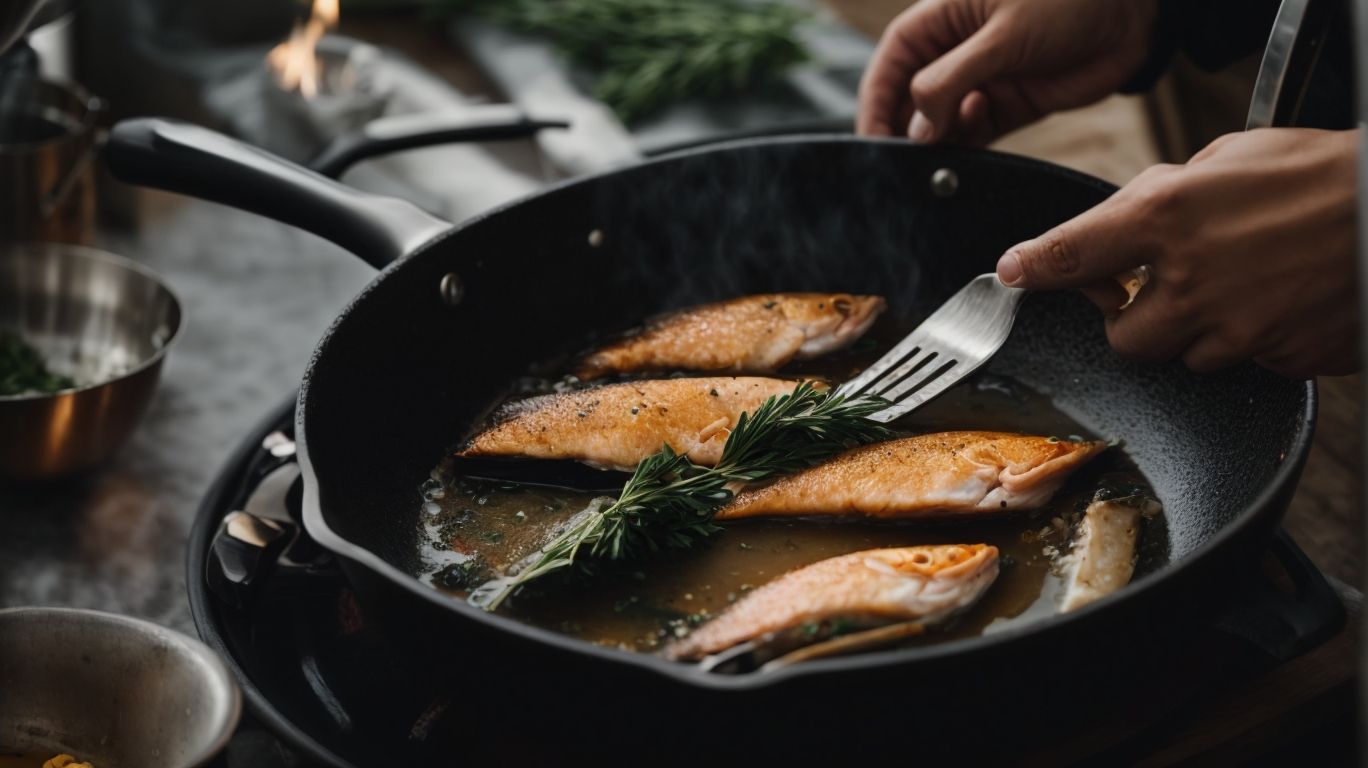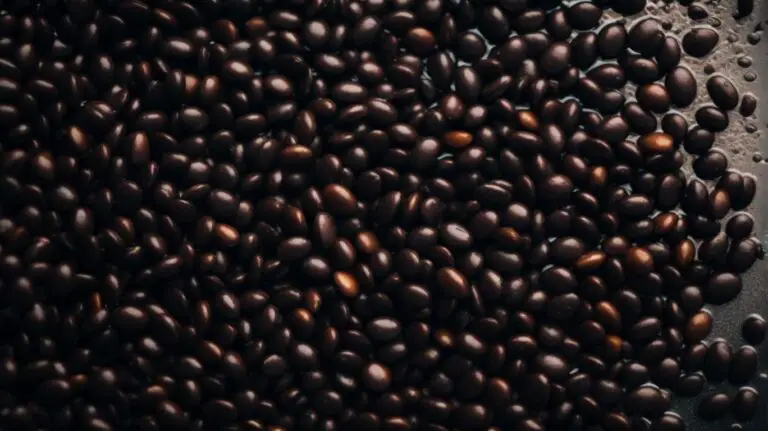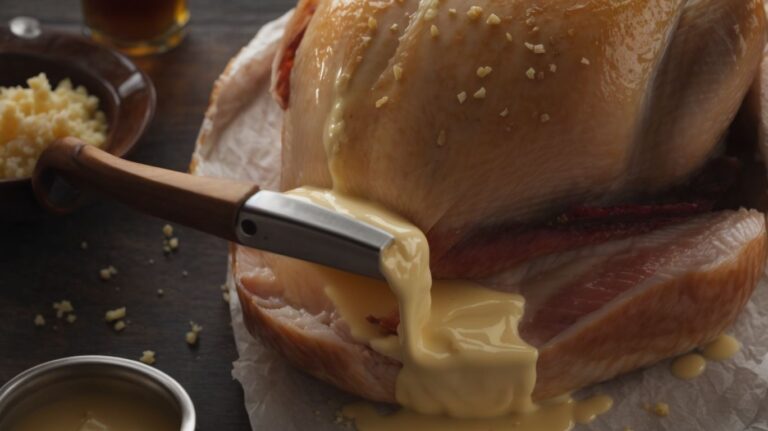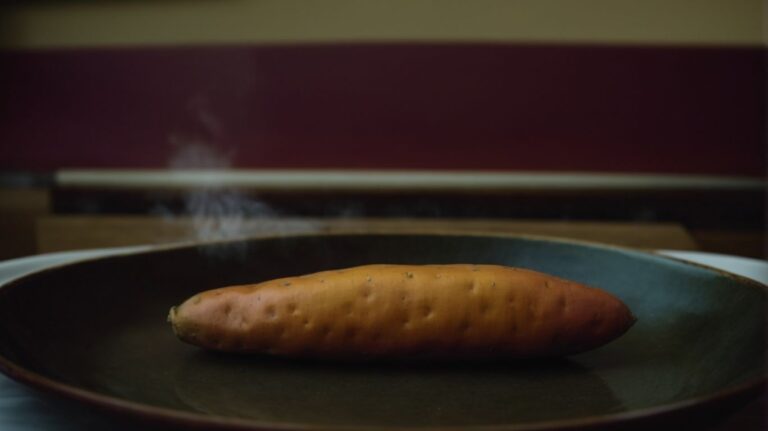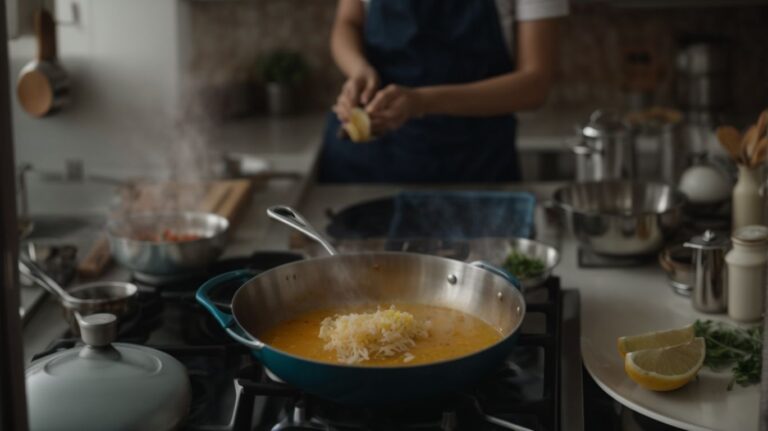How to Cook Fish for Fish Cake?
Are you looking to create the perfect fish cake but not sure which fish to use or how to prepare it?
We will explore the best fish options for fish cakes, how to clean and fillet the fish, make the perfect fish cake mixture, and cook it to perfection.
Whether you prefer pan-frying, baking, or deep-frying, we’ve got you covered.
Stay tuned for tips on serving suggestions that will elevate your fish cake game to the next level. Let’s dive in!
Key Takeaways:
What is the Best Fish for Fish Cake?
Choosing the best fish for fish cakes is crucial to achieving a delicious and satisfying dish that is loved by many.
Regarding preparing fish cakes, various types of fish can be used, each bringing its unique flavor and texture to the dish.
- White fish, such as cod or haddock, is a popular choice due to its mild taste and firm texture, which holds up well in the cake.
- Salmon offers a richer flavor with its oilier flesh, adding a luxurious element to the dish.
- Tuna, known for its meaty texture, provides a robust flavor that pairs well with bold seasonings.
- Cod, another versatile option, offers a delicate taste and flaky texture, making it a favorite for classic fish cake recipes.
White Fish
White fish, known for its delicate flavor and flaky texture, is a popular choice for fish cakes, especially when paired with aromatic ingredients like garlic and parsley.
White fish, such as cod, haddock, or tilapia, brings a subtle taste that doesn’t overpower the dish, allowing the flavors of garlic and parsley to shine through. Its flaky texture also lends itself well to being easily flaked or minced for fish cake recipes.
When preparing white fish cakes, it’s essential to remove any bones and skin to ensure a smooth and uniform consistency in the final dish. Mixing the flaked fish with a binder like breadcrumbs or mashed potatoes helps hold the cakes together during cooking.
Cooking techniques such as pan-frying or baking are commonly used to achieve a crispy exterior while keeping the inside moist and flavorful. The addition of garlic adds a savory depth, complemented by the fresh brightness of parsley.
Salmon
Salmon, with its rich and buttery taste, lends a unique flavor profile to fish cakes, complemented by the crunch of breadcrumbs and the zest of lemon.
When crafting salmon fish cakes, the delicate yet robust flavor of the fish shines through, creating a dish that appeals to both seafood aficionados and those new to cooking with fish. The firm texture of salmon helps bind the ingredients together, resulting in a satisfying mouthfeel with each bite. Adding breadcrumbs to the mix introduces a crispy exterior that contrasts beautifully with the flaky salmon interior.
Lemon, with its citrusy brightness, adds a refreshing element to the fish cakes, cutting through the richness of the salmon. Whether incorporated into the batter or served as a zesty garnish, the hint of lemon elevates the overall flavor profile, making each bite a harmonious blend of savory, crunchy, and tangy notes.
Tuna
Tuna, known for its meaty texture and robust flavor, adds a savory element to fish cakes when combined with creamy mayonnaise and fragrant herbs.
One of the key reasons why tuna stands out in fish cakes is its ability to hold up well during cooking, retaining a moist and tender consistency that pairs beautifully with the crunch of the outer layer. This combination creates a delightful contrast of textures that keeps each bite interesting.
When mixed with mayonnaise, tuna not only contributes to the moistness of the fish cake but also adds a subtle richness that enhances the overall taste profile. The addition of fresh herbs like parsley or dill injects a burst of freshness and aroma, elevating the dish to a whole new level.
Cod
Cod, a mild and versatile fish, serves as a classic option for fish cakes, enhanced by the light crunch of panko breadcrumbs and the richness of olive oil.
One of the remarkable aspects of using cod in fish cakes is its ability to pair beautifully with a wide range of flavors. Whether seasoned with zesty lemon and parsley for a refreshing twist or infused with smoky paprika and garlic for a more robust taste, cod adapts well to diverse culinary influences.
The incorporation of panko breadcrumbs creates a delightful textural contrast in the fish cakes. While the exterior becomes crispy and golden when fried, the cod inside remains moist and tender, offering a satisfying eating experience.
Olive oil not only adds a luxurious richness to the dish but also helps bind the ingredients together. Its subtle fruity notes complement the delicate flavor of cod, elevating the overall taste profile of the fish cakes.
How to Prepare the Fish for Fish Cake?
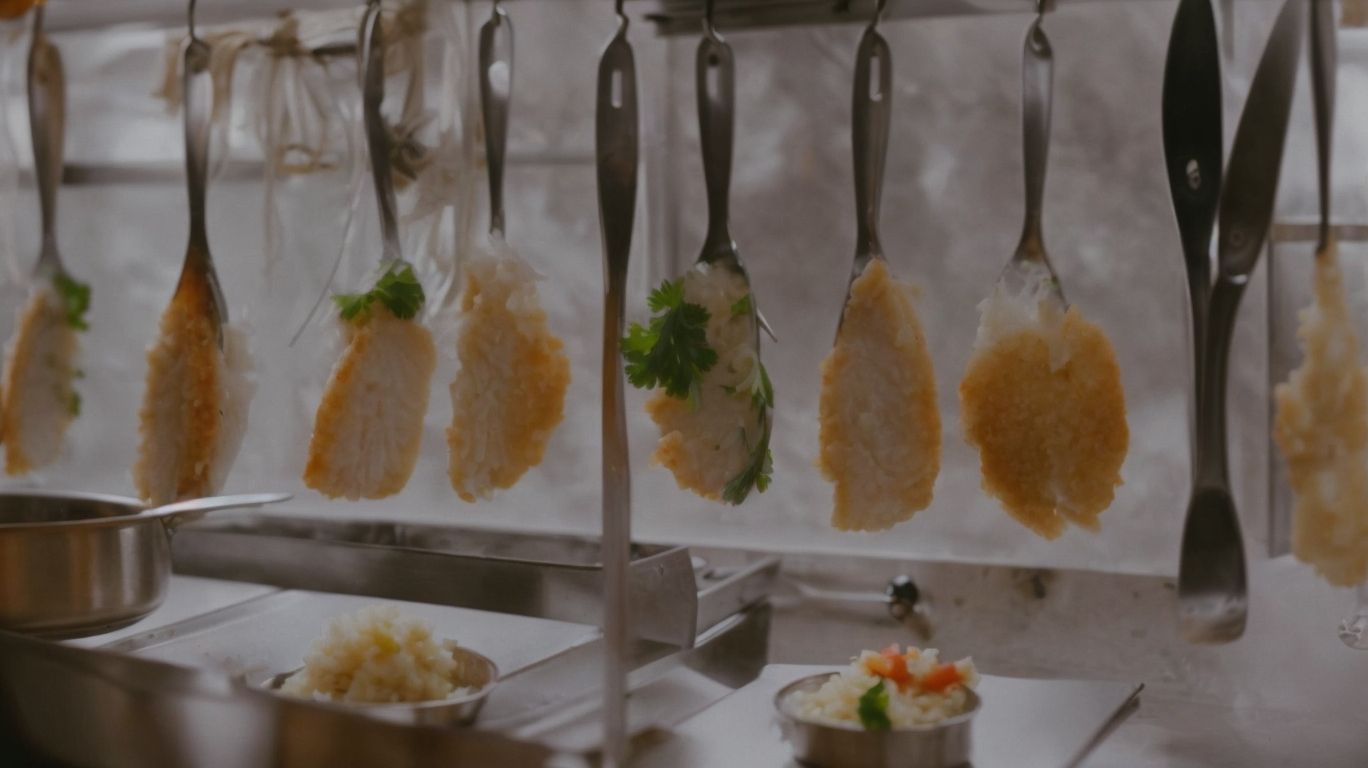
Credits: Poormet.Com – Russell Roberts
Preparing the fish for fish cakes involves essential steps such as cleaning, filleting, and removing the skin and bones to ensure a smooth and enjoyable eating experience.
Once the fish has been cleaned and scaled, it’s time to begin the meticulous process of filleting. Start by laying the fish flat on a clean cutting board. Using a sharp knife, carefully slice along the backbone to separate the fillets from the rest of the fish.
This step requires precision to ensure that you get as much meat as possible. Remove the fillets and place them skin-side down. Run your knife along the skin to separate it from the flesh, making sure to discard the skin as it can add unwanted toughness to the fish cakes.
Cleaning and Filleting the Fish
Cleaning and filleting the fish is a fundamental step in preparing fish cakes, ensuring that the fish is free of scales, bones, and impurities before blending it with aromatic ingredients like garlic and parsley.
Begin by scaling the fish to remove the outer layer containing scales, carefully scraping from the tail towards the head to ensure a thorough cleaning process. Next, carefully remove any bones by making a precise incision along the belly to extract the main skeleton, ensuring no bones remain within the fillet.
Regarding removing impurities, gently rinse the fillets under cold water to wash away any remaining residue. The combination of garlic and parsley works wonders in enhancing the natural flavors of the fish, infusing it with a delightful aroma and taste.
Removing the Skin and Bones
Removing the skin and bones from the fish is essential to create a smooth and uniform texture in fish cakes, ensuring a delightful eating experience when combined with ingredients like potatoes.
When preparing fish for cakes, starting with a fresh, whole fish is the best approach. To remove the skin, start by making a shallow incision along the edge with a sharp knife, then gently peel it off. The bones can be trickier; a fillet knife can help carefully cut along the ribs to separate them. For an easier way to integrate potatoes, consider boiling and mashing them before mixing with the boneless fish. This method not only adds a creamy texture but also enhances the flavors when combined and cooked.
Cutting the Fish into Small Pieces
Cutting the fish into small, uniform pieces is essential for creating cohesive fish cakes that blend harmoniously with herbs and other ingredients, enhancing the overall flavor profile of the dish.
When preparing the fish, it’s crucial to use a sharp knife to ensure clean cuts that maintain the fish’s integrity. Start by filleting the fish, removing any bones or skin, and then carefully slice it into small cubes or strips, ensuring they are all of similar size.
By achieving uniformity in size, you guarantee that each piece cooks evenly, preventing some parts from being undercooked while others are overdone. This attention to detail results in a harmonious blend of textures and flavors, enhancing the enjoyment of every bite.
How to Make the Fish Cake Mixture?
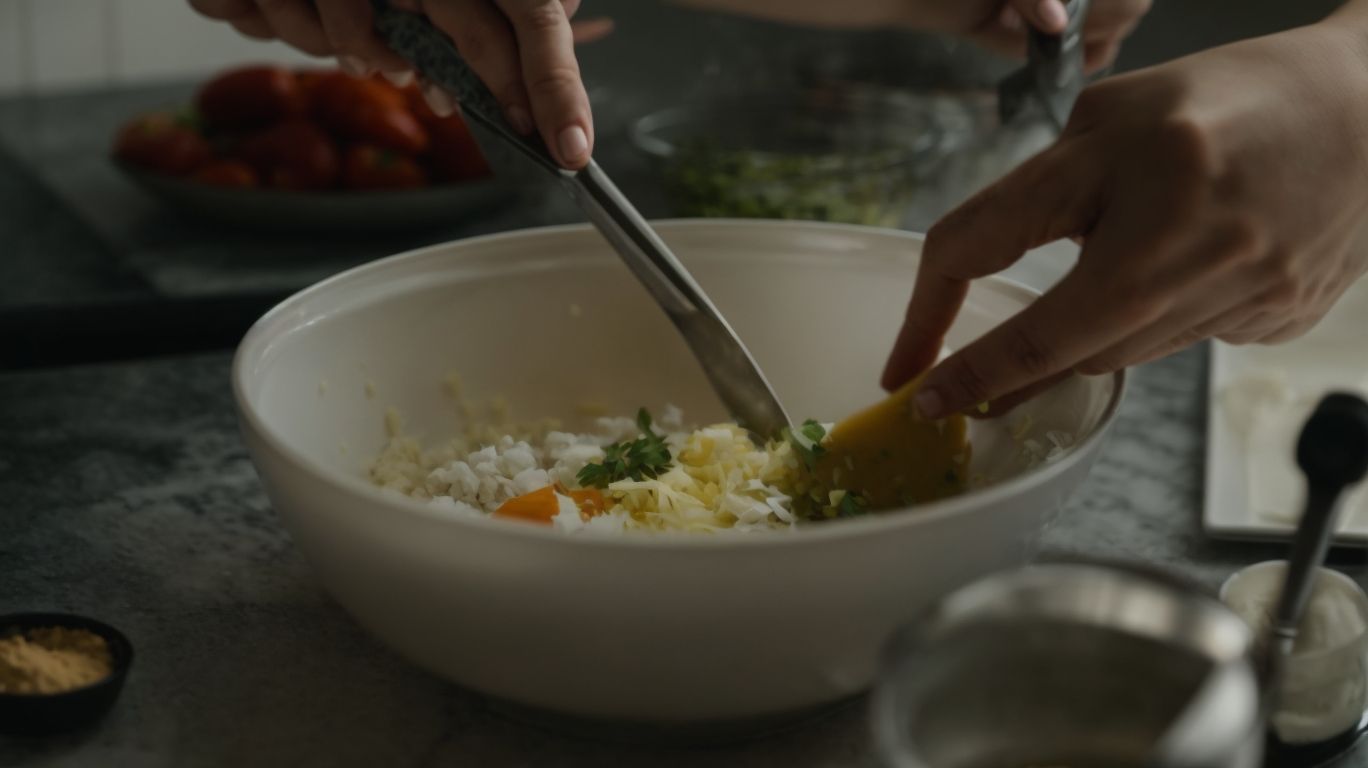
Credits: Poormet.Com – Eric Rivera
Creating the perfect fish cake mixture involves blending the fish with a medley of ingredients and seasonings to achieve a harmonious flavor profile that delights the palate.
Start by flaking the cooked fish into small pieces and transferring it to a mixing bowl. Then, wash, peel, and grate potatoes finely, adding them to the fish. Incorporate chopped fresh herbs like parsley, dill, or chives for a burst of flavor. Next, season the mixture with a pinch of salt, black pepper, and a hint of paprika to enhance the taste. A touch of lemon zest can add a citrusy zing. Mix everything gently to combine the flavors without overworking the mixture. Once it’s well-blended, shape the mixture into fish cakes of desired sizes before cooking. Remember, the balance of seasonings is crucial in creating a fish cake that stands out both in taste and aroma.
Mixing the Fish with Other Ingredients
Combining the fish with complementary ingredients such as potatoes and herbs is a key step in creating flavorful fish cakes, with salt playing a crucial role in enhancing the overall taste profile.
When mixing the fish, it’s essential to balance the flavors harmoniously. The addition of salt not only enhances each component’s natural taste but also helps to bring out the nuances of the fish. Potatoes serve as a binding agent, providing a creamy texture to the mixture, ensuring the cakes hold their shape when cooked. Herbs, whether fresh or dried, introduce aromatic notes that elevate the dish’s overall flavor. Combining these elements results in a harmonious blend that offers a depth of flavors and a satisfying eating experience.
Adding Seasonings and Flavors
Incorporating a blend of seasonings and flavors such as pepper into the fish cake mixture is essential to create a well-rounded taste that tantalizes the senses and elevates the dining experience.
Pepper, with its distinct pungency and warmth, has the remarkable ability to bring out the natural flavors of the fish while adding a subtle kick.
By judiciously balancing pepper with complementary spices like cumin and coriander, you can achieve a harmonious fusion of flavors that dance on your palate.
Your choice of herbs, such as fresh dill or parsley, can further elevate the dish, adding a refreshing aroma and a burst of freshness.
Incorporating Binders
Using binders like egg and flour is crucial for maintaining the shape and texture of fish cakes, ensuring a cohesive and well-formed final product that is both visually appealing and delicious.
When incorporating egg as a binder, it not only helps in holding the mixture together but also adds richness and moisture to the fish cakes. Be sure to beat the eggs well before adding them to the fish cake mixture to achieve a uniform consistency.
Similarly, flour acts as a stabilizing agent by absorbing excess moisture and providing structure. To prevent the fish cakes from becoming too dense, gently fold in the flour until just combined, avoiding overmixing.
How to Cook the Fish Cake?
Cooking fish cakes can be done through various methods like pan-frying, baking, or deep-frying, each offering a unique texture and flavor profile to the final dish.
When pan-frying fish cakes, the heat from the skillet creates a crispy exterior while keeping the inside moist and tender. To achieve the perfect golden crust, ensure the oil is hot but not smoking. For baking, the gentle heat of the oven slowly cooks the fish cakes, resulting in a healthier option with less oil. Adding a drizzle of oil on top before baking can enhance the crispiness.
Deep-frying fish cakes yields a luxurious crispy coating, but it absorbs more oil. Maintaining the oil temperature is crucial; too hot, and the outside burns before the inside is cooked properly. To reduce oil absorption, ensure the oil is at the right temperature before frying.
Pan-Frying
Pan-frying fish cakes in olive oil imparts a crispy exterior and a flavorful finish, enhanced by the addition of chili for a hint of heat that tantalizes the taste buds.
As the fish cakes sizzle in the hot skillet, the olive oil works its magic, creating that desirable golden brown crust that promises a crunchy first bite, giving way to a succulent and moist interior.
The chili, when added judiciously, intertwines with the delicate fish flavors, offering a delightful balance of heat and subtle spiciness that elevates the overall taste profile.
Baking
Baking fish cakes in the oven allows for a healthier cooking method while infusing the dish with the aromatic essence of herbs like thyme, creating a flavorful and nutritious meal.
When fish cakes are baked, they retain more moisture compared to frying, resulting in a succulent texture that bursts with juicy flavors upon every bite. The gentle heat of the oven allows the fish to cook evenly while capturing the earthy notes of thyme and other herbs, elevating the overall taste profile.
By choosing to bake fish cakes instead of frying them, you reduce the amount of oil used, making the dish lower in fat and calories. This method also eliminates the risk of the cakes becoming overly greasy, offering a cleaner and more satisfying eating experience.
Deep-Frying
Deep-frying fish cakes in sunflower oil yields a crispy and indulgent texture, with breadcrumbs aiding in the formation of a golden crust that seals in the juices and flavors of the fish.
Regarding achieving that perfect crunch on the outside of your fish cakes, the choice of oil plays a crucial role. Sunflower oil, with its high smoke point, ensures that the fish cakes fry quickly and evenly, resulting in a crispiness that is truly satisfying. The breadcrumbs, on the other hand, not only contribute to the crunchiness but also help to absorb excess oil during frying, preventing the fish cakes from becoming greasy. This dynamic combination of sunflower oil and breadcrumbs creates a delightful contrast between the crispy exterior and the tender, flavorful interior of the fish cakes.
Tips for Perfectly Cooked Fish Cake
Achieving perfectly cooked fish cakes requires attention to detail, including using a non-stick pan, cooking on medium heat, and flipping the cakes carefully to ensure even browning and optimal texture.
Regarding cooking fish cakes, the choice of pan plays a crucial role in their success. Selecting a high-quality non-stick pan ensures that the cakes don’t stick, making flipping them a breeze and simplifying cleanup after the cooking process.
Maintaining a medium heat throughout the cooking process is key to achieving that beautiful golden crust while keeping the cakes tender and moist inside. As you gently flip the fish cakes, use a spatula to support them from underneath, ensuring they hold their shape and don’t break apart. Mastering the art of flipping fish cakes without losing their form elevates your dish to a professional level, impressing both yourself and your guests.
Use a Non-Stick Pan
Utilizing a non-stick pan when cooking fish cakes ensures that they cook evenly and achieve a golden crust, with a minimal amount of oil such as olive oil to prevent sticking and enhance the flavor profile.
One of the key advantages of using a non-stick pan is the efficient heat distribution, which helps in cooking the fish cakes uniformly, ensuring that every bite is perfectly cooked. This feature also aids in achieving that desirable crispy exterior while keeping the insides tender and moist.
The reduced need for oil in a non-stick pan not only promotes healthier cooking but also allows the natural flavors of the fish cakes to shine through. Instead of worrying about excessive oil, you can focus on seasoning the fish cakes with a sprinkle of freshly ground pepper, enhancing the overall taste and texture.
Cook on Medium Heat
Cooking fish cakes on medium heat allows for thorough cooking without burning, ensuring that the flavors of salt and thyme are infused into the dish for a well-balanced and delicious outcome.
When cooking fish cakes, it’s essential to pay close attention to the heat level of the pan. Medium heat provides the perfect balance, allowing the cakes to cook through evenly while avoiding scorching. This gentle heat ensures that the moisture is retained, keeping the fish cakes moist and tender.
Seasoning plays a crucial role in enhancing the taste of fish cakes. The combination of salt and thyme offers a symphony of flavors that elevate the overall dish. Salt helps to bring out the natural flavors of the fish, while thyme adds a subtle, aromatic note that complements the seafood beautifully.
Flip the Cakes Carefully
Flipping fish cakes carefully during cooking is essential to maintain their shape and texture, ensuring that the lemon undertones permeate the dish for a refreshing and zesty flavor.
When flipping fish cakes, it’s crucial to use the right technique to prevent them from falling apart. A gentle touch and the correct spatula are key to success. Slide the spatula smoothly under the fish cake, then swiftly and confidently turn it over. This method helps in retaining the delicate texture of the fish cakes.
Adopting this approach ensures that the flavors are evenly distributed. Incorporating lemon into the mixture not only brightens the taste profile but also adds a subtle tanginess that complements the savory notes of the fish cakes.
Serving Suggestions for Fish Cake
Enhance the dining experience of fish cakes with an array of delectable serving suggestions such as traditional tartar sauce, spicy aioli, and lemon dill sauce that elevate the flavors and textures of the dish.
Classic tartar sauce, with its creamy and tangy profile, is a timeless companion to fish cakes, adding a delightful contrast that complements the mild flavor of the fish.
On the other hand, the fiery kick of spicy aioli brings a modern twist, infusing the dish with a bold and zesty flavor that appeals to those craving a bit of heat.
For a lighter and refreshing option, consider pairing fish cakes with a lemon dill sauce. The subtle citrus notes of lemon combined with the herbaceous freshness of dill create a harmonious marriage of flavors that enhance the delicate nature of the fish.
Traditional Tartar Sauce
Traditional tartar sauce, enriched with capers and horseradish, is a classic accompaniment to fish cakes, offering a tangy and creamy contrast that complements the savory flavors of the dish.
The briny capers add a burst of freshness to the creamy base of mayonnaise, while the pungent kick of horseradish provides a robust flavor that cuts through the richness of the fish. When paired with crispy-on-the-outside, tender-on-the-inside fish cakes, the tartar sauce elevates each bite with its zesty tang and subtle heat.
Spicy Aioli
Spicy aioli, featuring bold flavors of Dijon mustard and shallot, offers a fiery kick to fish cakes, creating a dynamic fusion of taste sensations that excite the palate.
The Dijon mustard in spicy aioli adds a punch of tangy heat, while the shallot brings a subtle oniony depth to the sauce. The combination of these two ingredients results in a sauce that is both zesty and aromatic, perfect for enhancing the flavors of delicate seafood like fish cakes. When paired with fish cakes, the spicy aioli provides a contrast of creamy richness from the mayonnaise base and the fiery intensity from the Dijon mustard. Each bite offers a harmonious blend of textures and flavors that leave a lingering spicy finish on the taste buds.
Lemon Dill Sauce
Lemon dill sauce, infused with the brightness of parsley and lemon zest, imparts a refreshing and herbaceous finish to fish cakes, enhancing their natural flavors with a burst of citrusy and aromatic notes.
When you delve into the components of this zesty concoction, you’ll find that the parsley and lemon zest work harmoniously to create a lively flavor profile. The fresh parsley adds a crisp, earthy note that cuts through the richness of the fish cakes, while the lemon zest contributes a tangy brightness that elevates the dish to new heights.
Frequently Asked Questions
1. How to Cook Fish for Fish Cake?
Cooking fish for fish cakes can be done in various ways such as baking, broiling, grilling, or pan-frying. The key is to cook the fish until it flakes easily with a fork, and then use it to make the fish cakes.
2. Can I use any type of fish to make fish cakes?
Yes, you can use any type of fish to make fish cakes. However, white fish such as cod, haddock, or tilapia are best suited for this dish as they have a mild flavor and a firm texture that holds up well in the fish cakes.
3. How do I prepare the fish for making fish cakes?
The fish needs to be cooked and flaked before it can be used in fish cakes. You can cook the fish by baking, broiling, grilling, or pan-frying it. Once cooked, let it cool and then use a fork to flake the fish into small pieces.
4. What other ingredients can I add to my fish cakes?
Apart from the cooked and flaked fish, you can add ingredients such as diced onions, minced garlic, chopped herbs, bread crumbs, and eggs to your fish cakes. These ingredients help to bind the fish cakes together and add flavor and texture.
5. How long should I cook the fish cakes?
The cooking time for fish cakes will depend on the size and thickness of the cakes. On average, fish cakes should be cooked for 3-4 minutes per side on medium-high heat. The key is to cook them until they are golden brown and cooked through.
6. Can I freeze fish cakes?
Yes, you can freeze uncooked fish cakes for later use. Simply place the fish cakes on a parchment-lined tray and freeze them for a few hours. Once frozen, transfer them to a freezer-safe bag or container. When ready to eat, thaw the fish cakes in the fridge overnight before cooking them.

